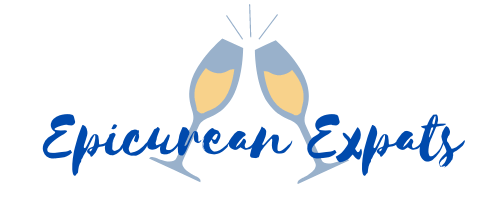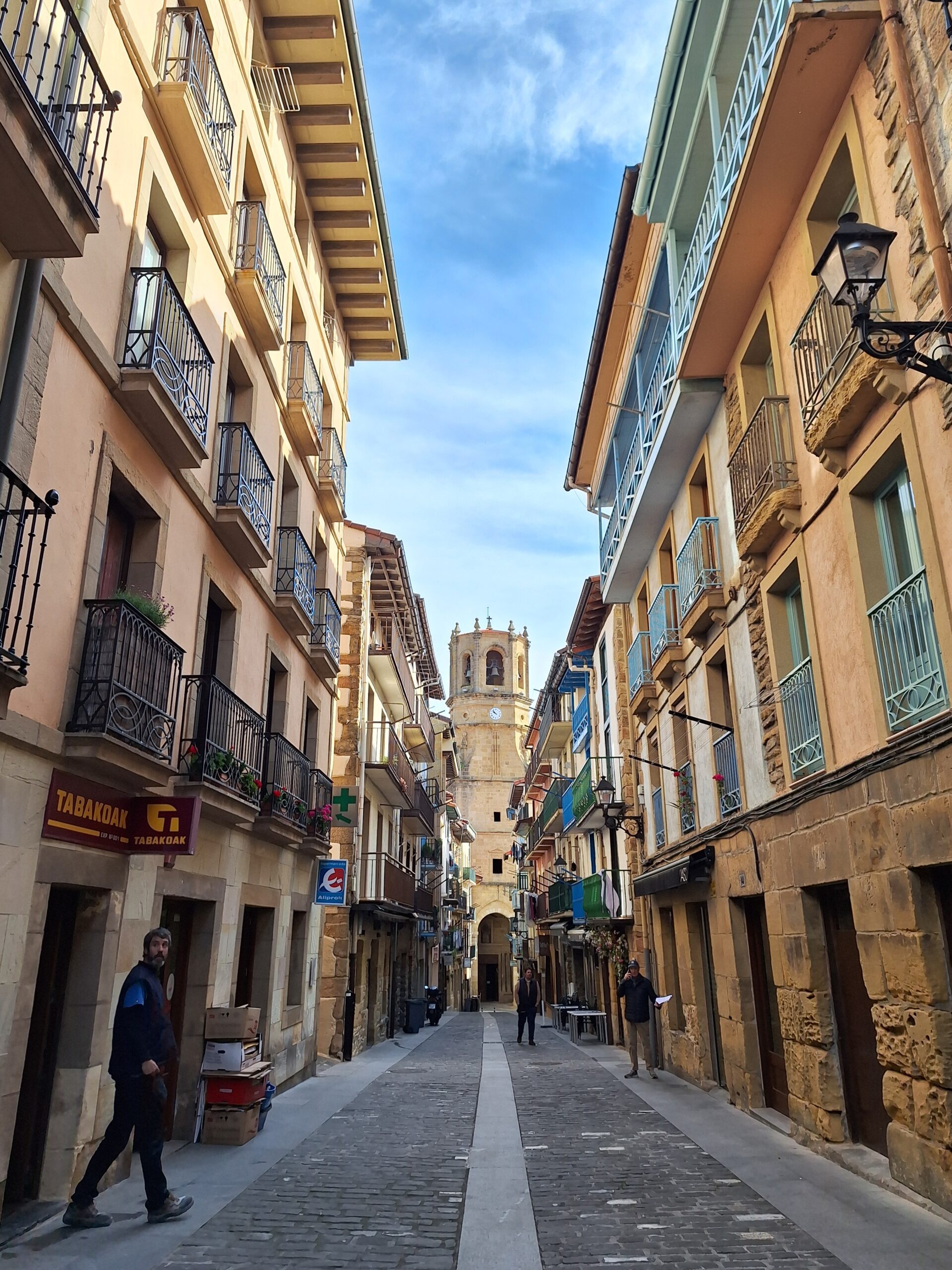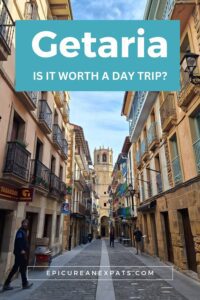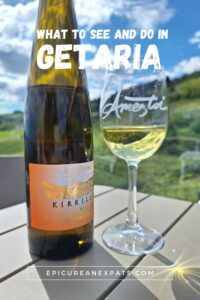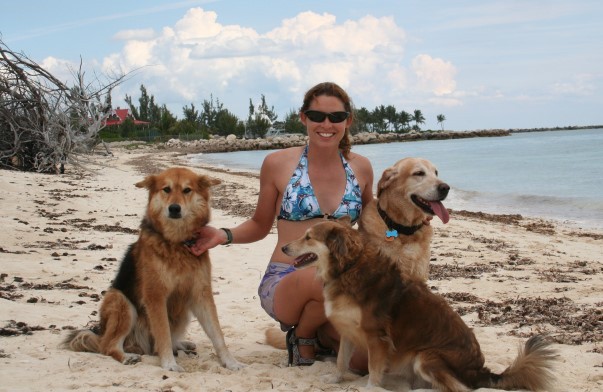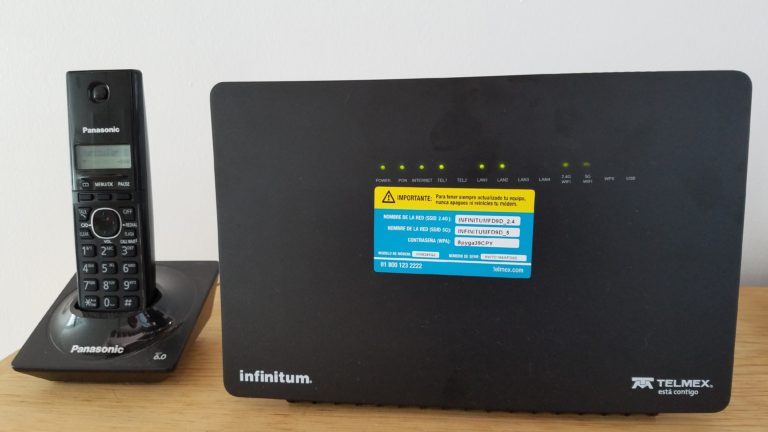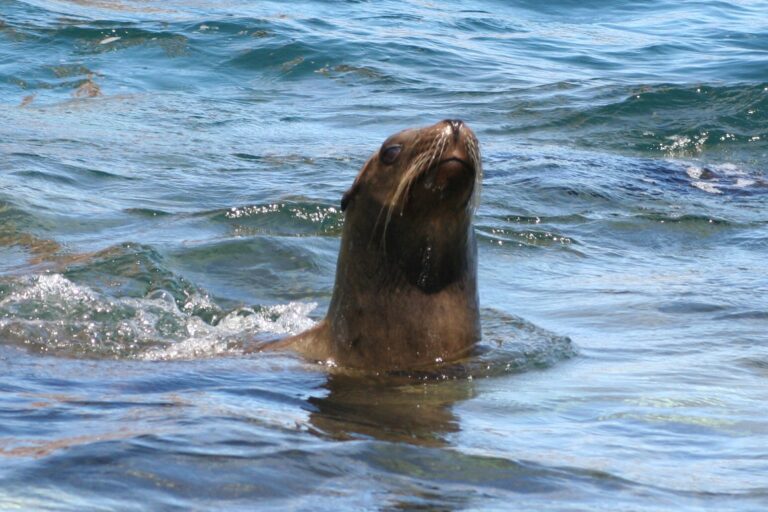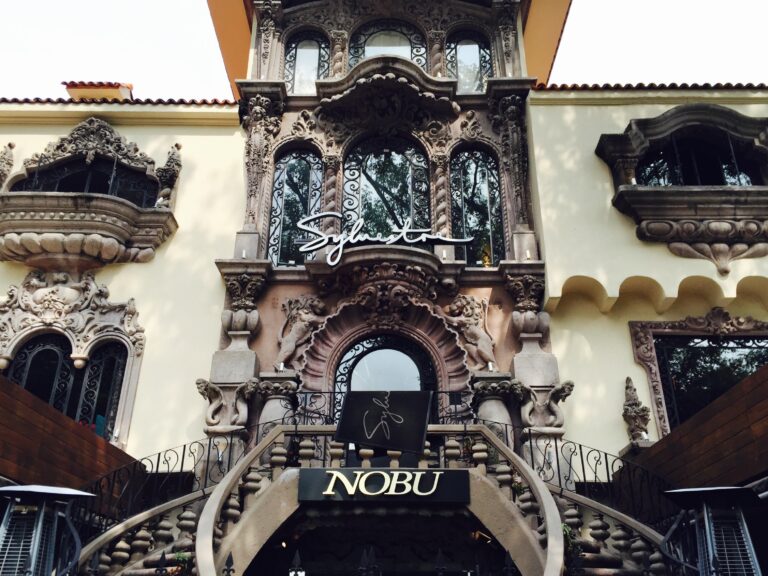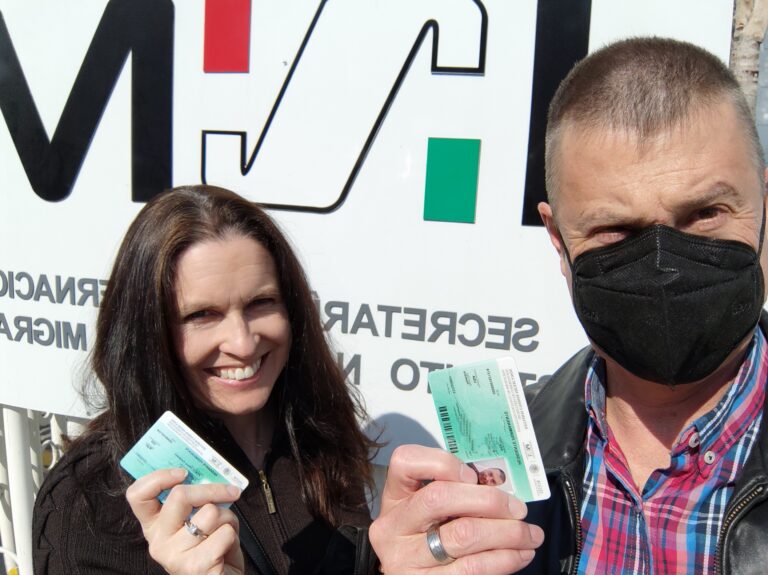Is Getaria Worth a Day Trip?
With its fishing heritage, the explorer Elcano, and the one-star Michelin restaurant, Elkano, Getaria is a relaxing day trip from San Sebastian. The town is small and can be seen easily in a few hours. Getaria is definitely worth a day trip to see this ancient seaside town, dine on fantastic seafood, and visit a Txakoli vineyard.
Disclosure: Some links may be affiliate links where we receive a super-small commission at no additional cost to you if you click through and make a purchase. We call this our Chocolate & Churro Fund.
Where is Getaria?
Getaria is between Bilbao and San Sebastian near Zarautz (the surf capital of Spain) on the northern coast of the Basque Country. The AP-8 highway (2 lanes) goes right through the town. Bilbao is an hour away and San Sebastian is 32 minutes away. Getaria makes a great day trip from either city.
Things to Do in Getaria
Getaria is a compact fishing village established in the late 12th century. The newer part of town is mostly residential and built on the hill on the other side of the two-lane highway that runs along part of the coast.
We spent two days in Gataria which isn’t necessary as you can easily see the sights of Getaria, visit a Txakoli vineyard, and eat at one of the seafood restaurants in one day. But we took this time to decompress on our big road trip around northern Spain and savor some relaxation.
Here are some key sights to see when you visit Getaria:
Casco Viejo (Old Town)
The historic old town of Getaria is small, running along three streets. Several tapas bars and a few shops occupy the ground level of the buildings with residents and hotel rooms on the upper levels. Some of the stone buildings have retained their coat of arms. Even in the rain, it’s a beautiful little village.
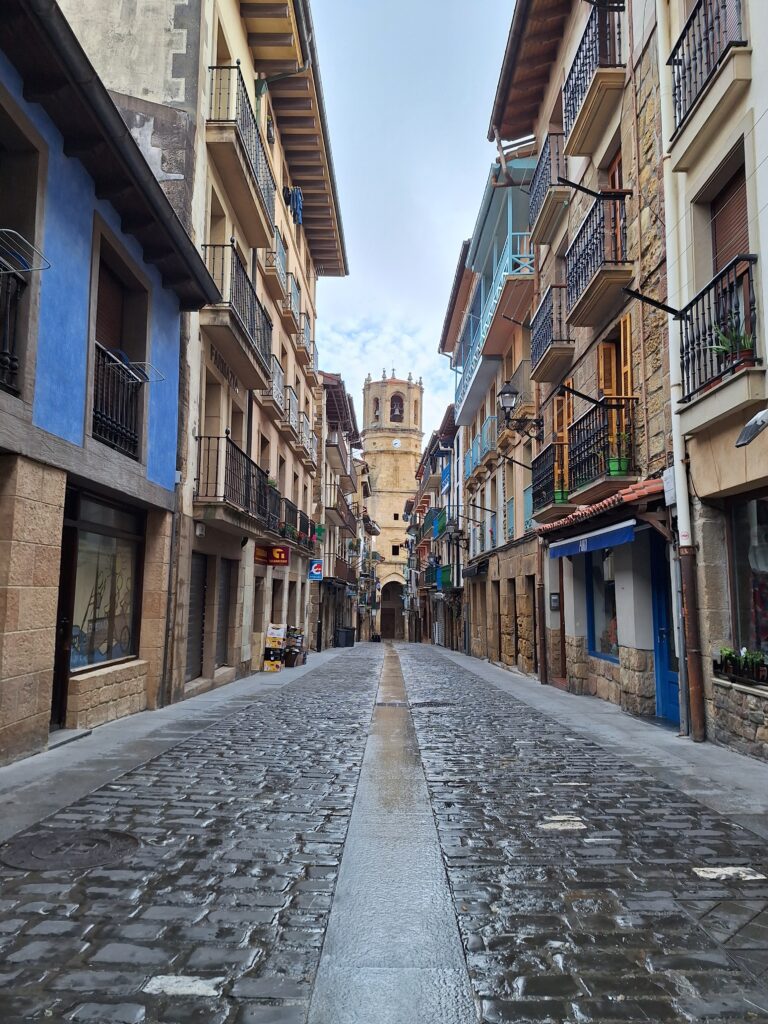
Church of San Salvador
The Church of San Salvador dates back to the 15th century, but the bell tower was added later in the 18th century. It’s a beautiful example of Basque Gothic architecture with three naves. A votive ship hangs down from the ceiling close to the entrance doors. This is an old maritime tradition that symbolizes a prayer or offering for the safe return of sailors and fishermen.
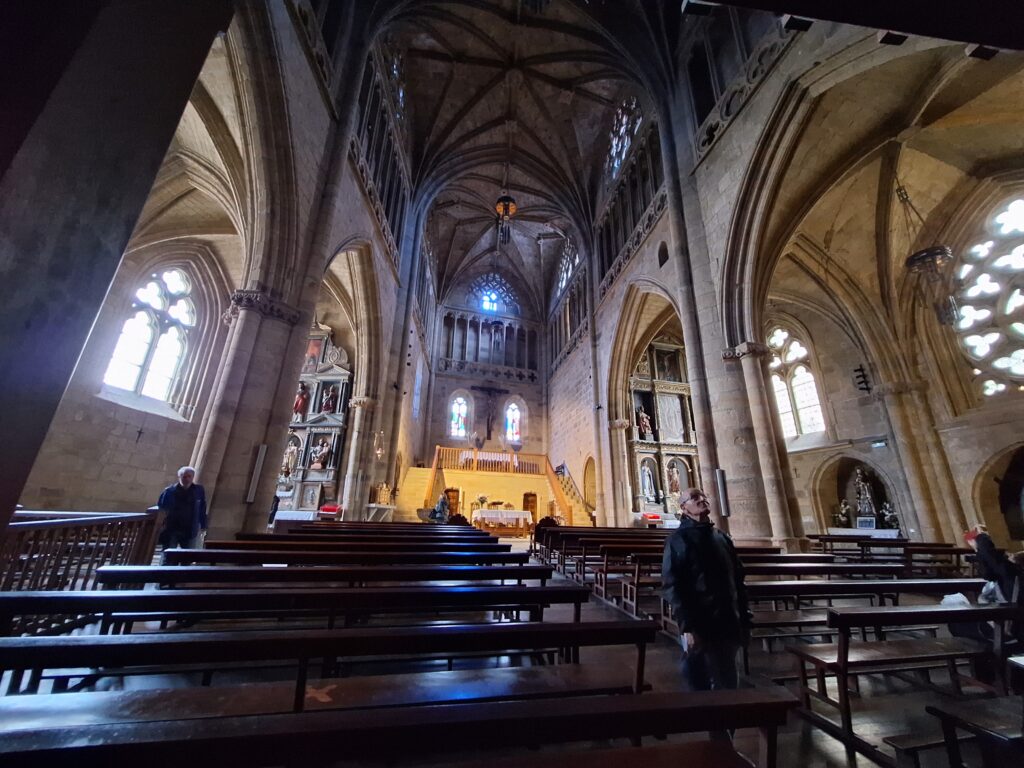
The famous explorer, Juan Sebastián Elcano (1476-1526) was baptized in this church. A worn stone slab on the floor commemorates Getaria’s most famous historical figure.
Cristóbal Balenciaga Museum
Getaria is the birthplace of the renowned fashion designer Cristóbal Balenciaga (1895-1972). His most famous clients were Grace Kelly, Audrey Hepburn, and Jackie Kennedy. He inspired several well-known fashion designers that we still admire today. The museum showcases over 1200 pieces of his work and contributions to fashion.
Juan Sebastián Elcano
The Portuguese captain Ferdinand Magellan may get all the credit for circumnavigating the globe, but he never completed the voyage. Instead, Juan Elcano, a navigator on the same expedition as Magellan, completed the voyage after Magellan was killed in the Philippines. King Charles V gave Elcano his own coat of arms which you can see throughout the town.
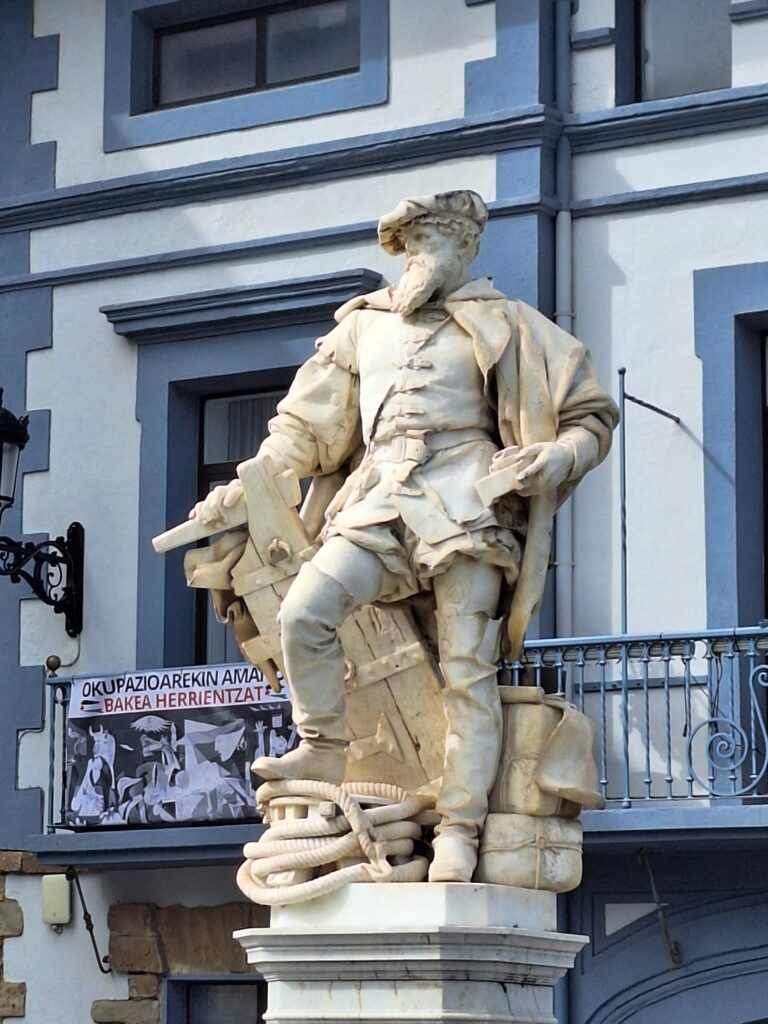
Elcano (sometimes spelled Elkano) was born into a fisherman’s family and worked as a sailor and navigator on many expeditions throughout his life.
A marble statue of Elcano, a gift from Madrid, stands in front of the town hall. Another statue of Elcano can be seen in the Elkanoren Plaza closer to the marina.
Beaches in Getaria
Getaria is flanked by two beaches. The one on the west is known as Gaztetape. We had a gorgeous view of this beach and its brave surfers from our hotel room at Saiaz Getaria Hotela.
To the east of Getaria just below the Monument to Elcano, is Markobe Hondartza, a much larger beach with calm waters.
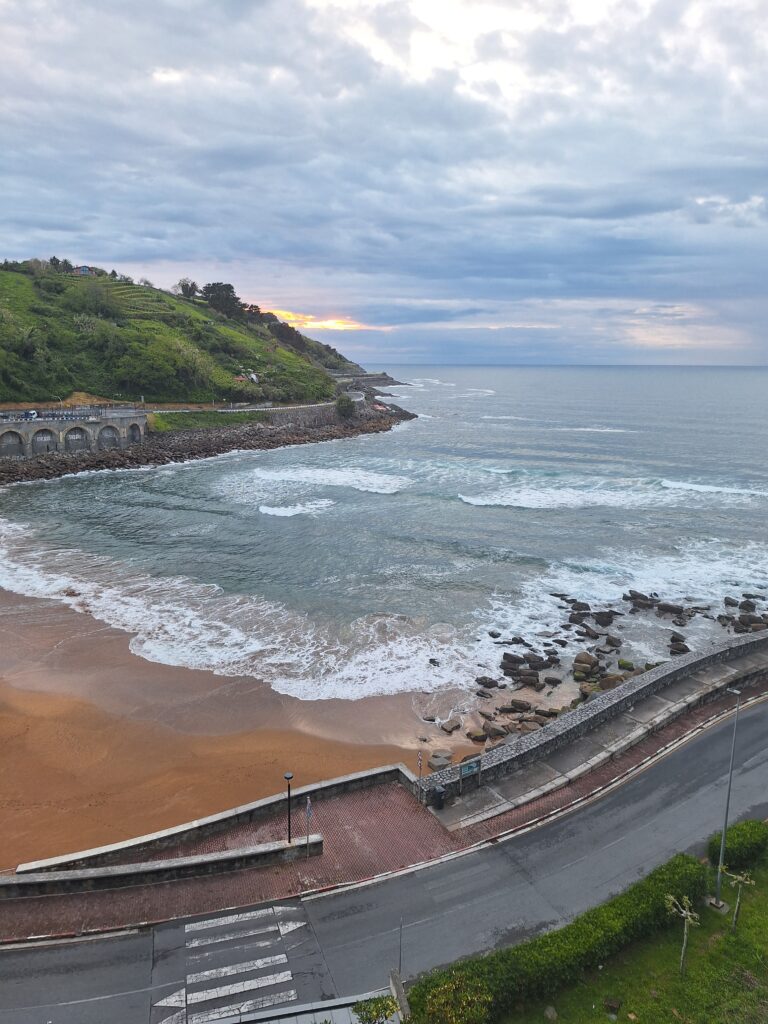
Monument to Juan Sebastian Elcano
Another monument was erected on the old Bastian walls of the town to Elcano. The Latin words carved on the entrance, “Primus Circumdedisti Me” translates to “you first surrounded me” (you first circumnavigated me is a better translation). Inside, there is a plaque with all the names of the sailors that were with Elcano on that historical journey in 1522.
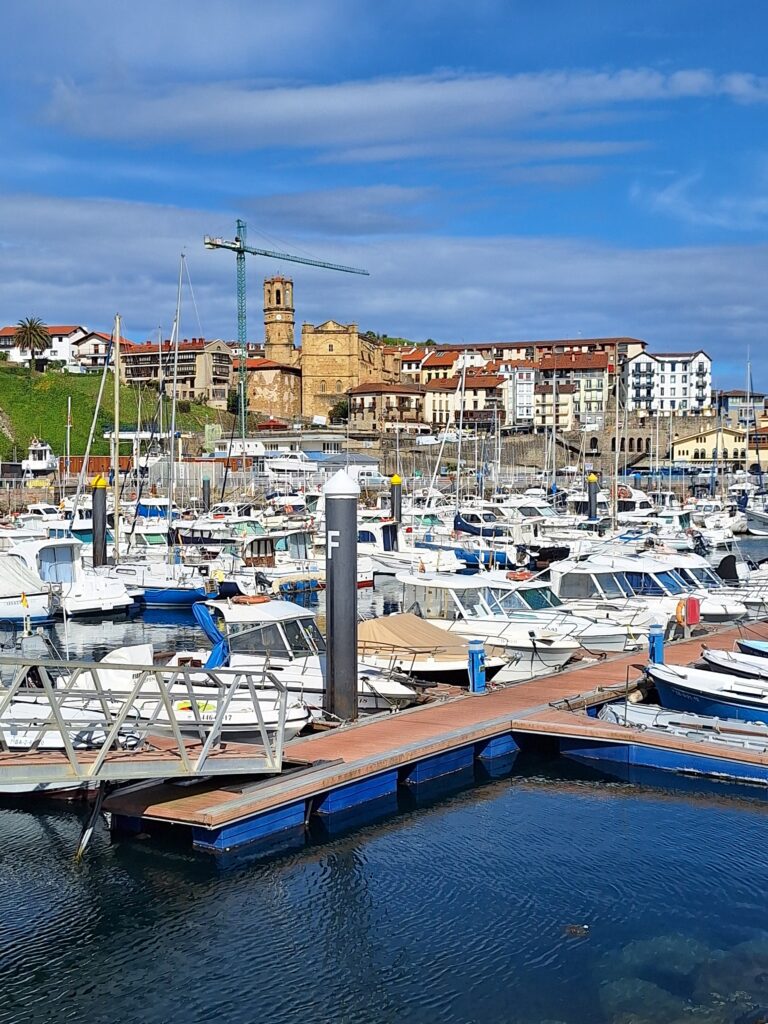
Climb the stairs for a fantastic view of the harbor, town, and Mt. San Anton jutting out into the sea. A sandstone Art Deco sculpture named “Victory” which resembles a ship’s masthead sits on top of the monument.
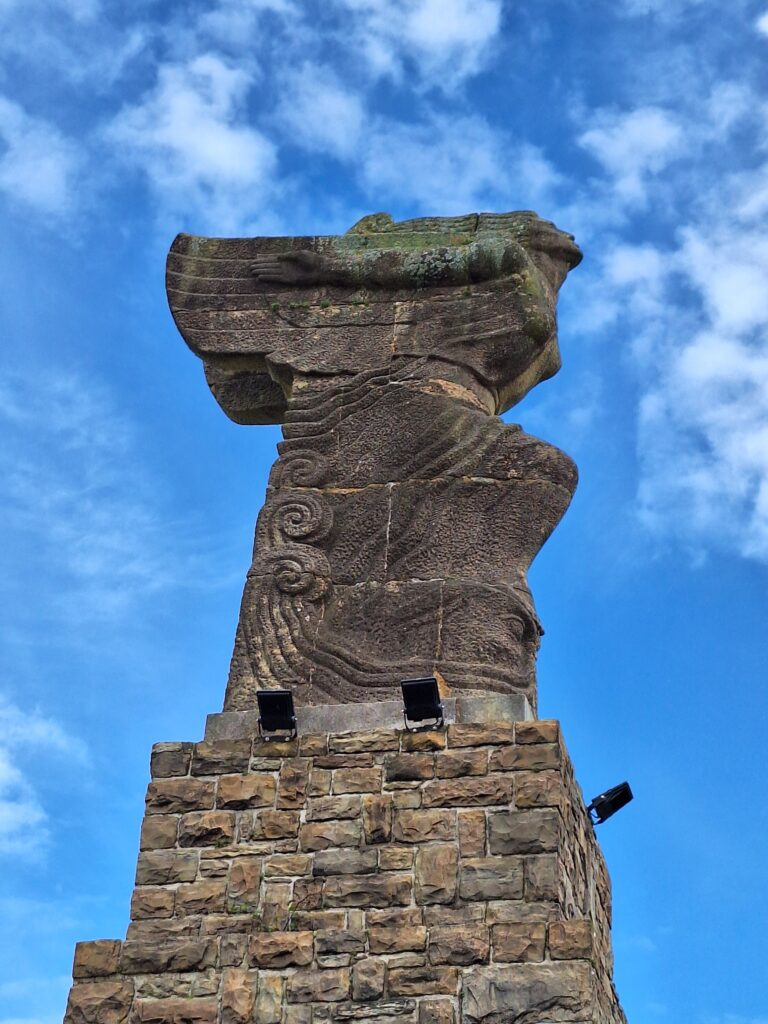
Getaria Marina
The marina is the heart of Getaria. Dine at one of the beautiful outdoor restaurants with a view of the fishing boats coming in with their catch of the day. In the morning, we walked out and back on the protective harbor wall walkway along with many locals. Across the opening, you can see the Monumento a la Mujer del Pescador, a statue of a fisherman’s wife with her children looking out to sea.
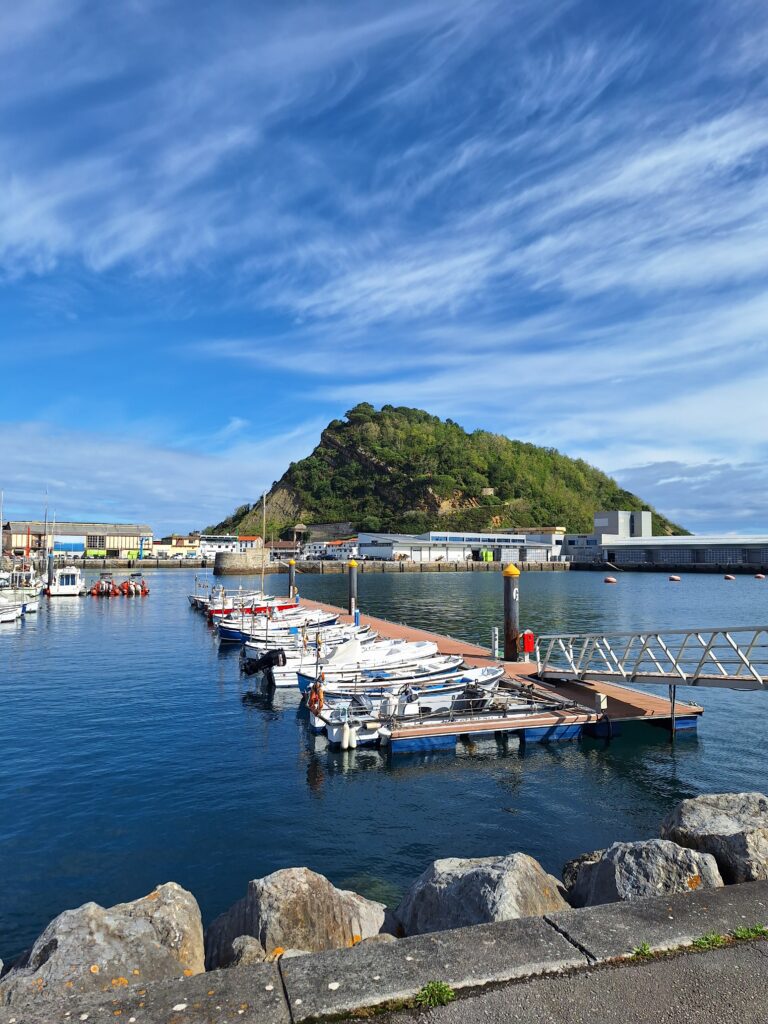
Mt. San Anton and Lighthouse
Mt. San Anton, more affectionally known as Ratón de Getaria, or “Mouse of Getaria” rises out of the ocean at the end of Getaria. Hiking trails lead up to viewpoints and the lighthouse. Unfortunately, with the unpredictable weather, we did not get a chance to do this, but we’ve read that it has incredible views.
Where to Eat in Getaria
Getaria has two Michelin restaurants in a town with less than 3000 people. Both Kaia Kaipe and the one-star Elkano specialize in grilled fish.
For a less expensive meal, but with plenty of ambiance, go to Bar Txoko, Elkano’s smaller establishment.
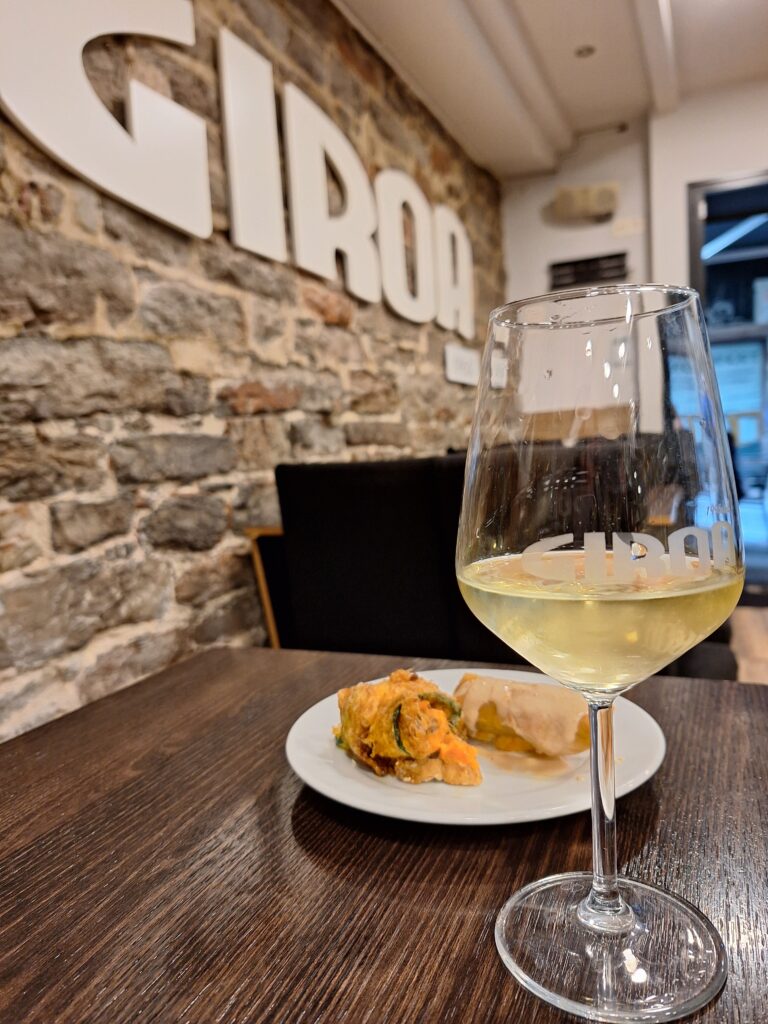
Many of the restaurants on and close to the marina still use the old wood-fire grills outside on the street to cook fish and other seafood. We chose to eat at the smaller tapas bars in the old town.
Txakoli Vineyard
The next day, we drove 20 minutes into the hills above Getaria to visit a Txakoli winery. Vineyards clung to the steep hillsides as we wound our way toward Ameztoi, our favorite Txakoli producer.
Tkakoli is a dry, white wine with high acidity made from the white Hondarrabi Zuri grape, cultivated for more than 600 years. It has a bit of effervescence in the glass and is best drunk young.
Fun Fact: The red variety of Txakoli is made from the Hondarrabi Beltza grape.
Txakoli vineyards grow exceptionally tall with very little canopy. The reason for this is because of the rain the coast receives. By growing the vines tall and with very little canopy, the grapes can dry faster with constant airflow above and below.
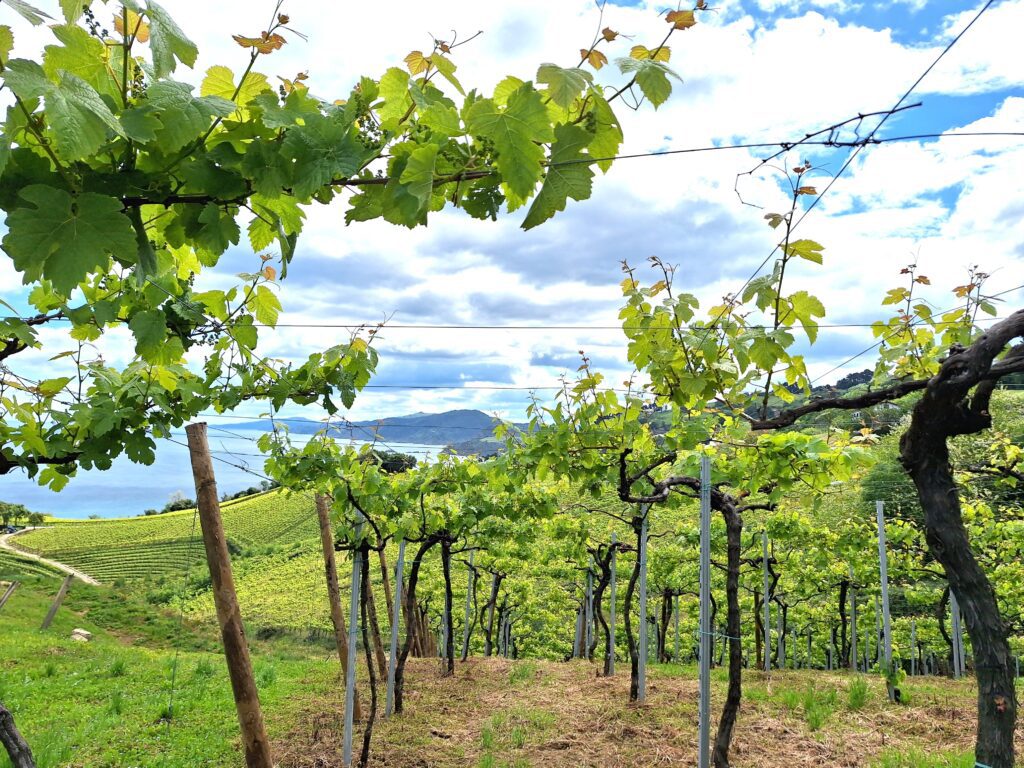
We bought a bottle of txakoli and sat outside to soak in the view over the vineyards to the coast. The wind was a bit strong that day, but it was just what we needed after three weeks on the road.
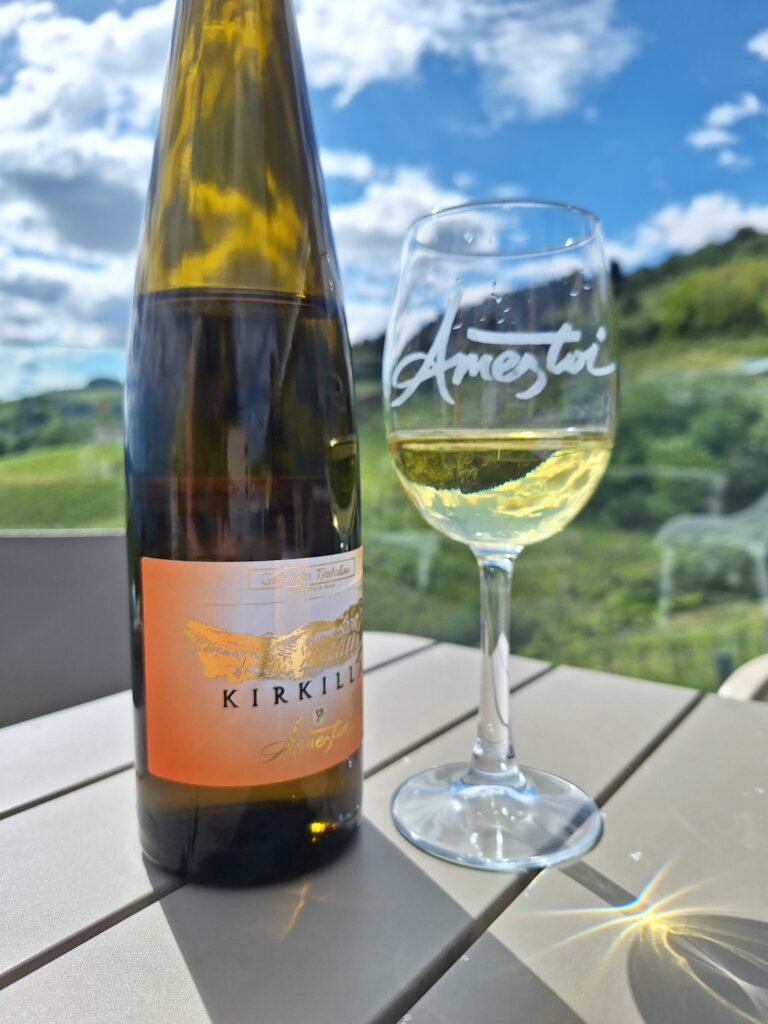
Ameztoi is a 5th generation family-owned winery that has been around since 1820. Their nickname is “Criquet”, which is a symbol of joy, happiness, and pride. Their Txakoli is exquisite. Definitely try it if you are in Getaria or at any Basque bar. Besides wine tours, Ameztoi also has a hotel on-site to enjoy the solitude of the vineyards overlooking the sea.
Travel Tips:
Cafes are open for breakfast between 9-11 am, tapas bars open between 12-3 and 7-9 pm, and restaurants open after 6 pm. Don’t quote me on the hours of operation, but these do seem to be the average opening times that we observed (Tip: We could not find accurate hours of operation on Google).
Getaria can easily be explored in one day from Bilbao or San Sebastian. Check out these tours that combine Getaria and other coastal towns:
Getaria offers a perfect blend of history, culture, gastronomy, and natural beauty, making it a relaxing destination for travelers looking to experience the Basque Country’s coastal charm.
